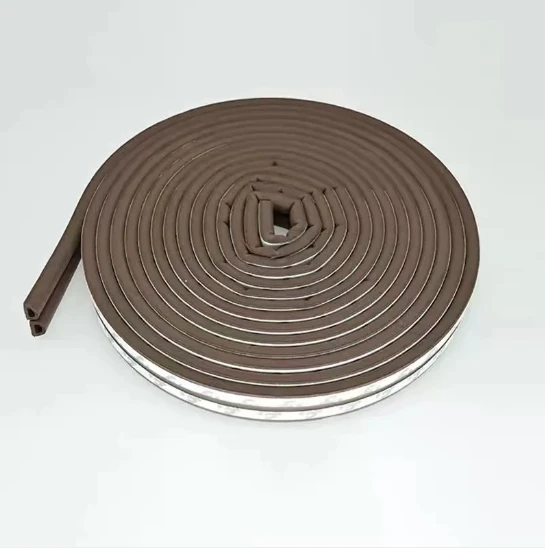Effective Garage Door Weatherstripping Solutions for Energy Efficiency and Protection
Understanding Garage Door Weatherstrip Seals A Comprehensive Guide
When it comes to maintaining a functional and efficient home, one often-overlooked aspect is the garage door and its weatherstrip seal. This essential component plays a crucial role in protecting your garage from the elements, minimizing energy loss, and ensuring optimal functionality. In this article, we will delve into what garage door weatherstrip seals are, their importance, types, installation tips, and maintenance practices.
What is a Garage Door Weatherstrip Seal?
A garage door weatherstrip seal is a strip of material, typically made of rubber, vinyl, or foam, that is installed around the edges of a garage door. Its primary function is to fill the gaps between the door and the door frame or floor, preventing drafts, moisture, debris, and pests from entering the garage. These seals help create an airtight barrier that not only protects the garage space but also enhances energy efficiency within the home.
Why is a Weatherstrip Seal Important?
1. Energy Efficiency A well-fitted weatherstrip seal can significantly reduce energy costs. By minimizing air leakage, it helps regulate the temperature inside the garage, especially if it is attached to the house. This is particularly important in extreme weather conditions, as maintaining a stable internal temperature can reduce the workload on your heating and cooling systems.
2. Protection Against Water Damage During heavy rains or snow, water can easily seep into the garage through gaps in the door. A weatherstrip seal protects the garage floor and any stored items from potential water damage, mold, and mildew growth, preserving your belongings and the structural integrity of your home.
3. Pest Prevention Rodents, insects, and other pests often seek shelter in garages. A properly installed weatherstrip seal acts as a barrier to these unwanted invaders, reducing the risk of infestation and keeping your garage environment clean and safe.
4. Enhanced Security Gaps around the garage door can provide easy access points for intruders. By sealing these gaps, you not only deter pests but also enhance the overall security of your property.
Types of Weatherstrip Seals
There are several types of garage door weatherstrip seals, each designed for different purposes and garage configurations
1. Bottom Seals These are typically installed at the bottom edge of the garage door and serve to prevent water and air from entering beneath the door. They come in various styles, such as T-shaped or L-shaped profiles.
garage door weatherstrip seal

2. Perimeter Seals Installed along the sides and top of the garage door, these seals prevent air and moisture from entering the garage when the door is closed. They are available in various materials, including rubber and vinyl.
3. Threshold Seals These seals are placed on the garage floor, providing an additional barrier against water and pests while also helping to insulate the space.
Installation Tips
Installing a weatherstrip seal can be a DIY project, but it requires careful measurement and preparation. Here are some tips
1. Choose the Right Material Depending on your garage needs, select a weatherstrip seal that matches your climate and the type of garage door you have.
2. Measure Accurately Before purchasing the seal, measure the dimensions of your garage door and the gaps that need sealing. This ensures you get the right size.
3. Prepare the Surface Clean the edges of the garage door and frame to remove any old sealant, dirt, or debris. This ensures a strong bond between the seal and the door.
4. Follow Manufacturer Instructions Each seal may have specific installation guidelines. Follow the instructions carefully for the best results.
Maintenance Practices
To prolong the lifespan of your weatherstrip seal, regular maintenance is essential. Inspect the seal periodically for signs of wear and tear, such as cracks or brittleness. Clean the seals with mild soap and water to prevent dirt accumulation, which can lead to deterioration. If you notice any damage, replace the weatherstrip as soon as possible to maintain its protective function.
Conclusion
A garage door weatherstrip seal is an indispensable element of any garage setup, providing protection against the elements, conserving energy, and enhancing security. By understanding its importance, types, installation procedures, and maintenance practices, homeowners can ensure their garage remains a safe and efficient space. Taking the time to install and maintain a quality weatherstrip seal will pay off in the long run, safeguarding your garage and contributing to the overall efficiency of your home.
-
Under Door Draught Stopper: Essential ProtectionNewsJul.31,2025
-
Garage Door Seal and Weatherstrips for ProtectionNewsJul.31,2025
-
Edge Banding Tape for Perfect EdgesNewsJul.31,2025
-
Table Corner Guards and Wall Corner ProtectorsNewsJul.31,2025
-
Stair Nose Edging Trim and Tile Stair SolutionsNewsJul.31,2025
-
Truck Bed Rubber Mats for Pickup BedsNewsJul.31,2025
-
Window Weather Stripping for Noise ReductionNewsJul.29,2025